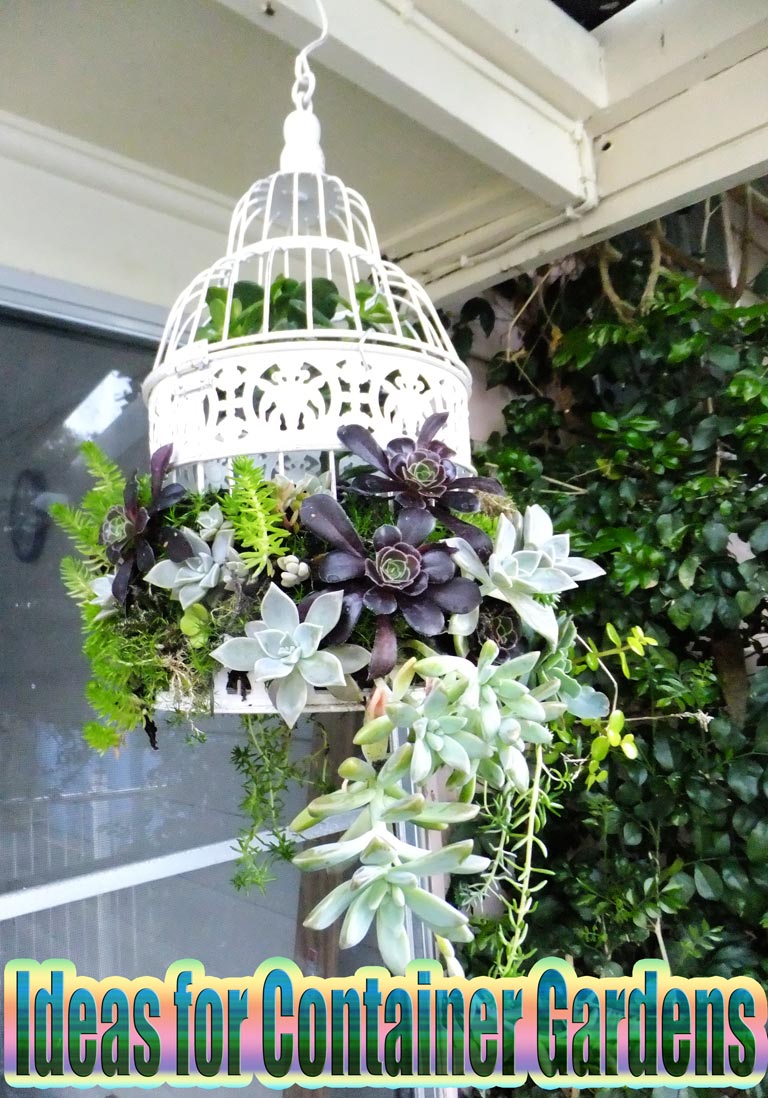
50 Ideas for Container Gardens
Inspiration to Start Your Own Container Garden Project.
Bored with the pots you use for container gardening? Refresh your landscape and boost your curb appeal with our fun ideas for container gardens.
When I got my first apartment, with just a tiny concrete pad for a patio and not a speck of rich loam in sight, I did what seemed natural and right: I bought myself a big terra cotta pot and planted tomatoes. My living circumstances have since changed—now I’m fortunate enough to have flower beds, shrubs and trees, a vegetable garden, and a compost pile—but I can guarantee you I still have the same terra cotta pot, or some variation of it.
That fact speaks to the durability and popularity of the material, as well as the versatile nature of container gardening itself. A container plus some potting soil and seeds or a plant equals flowers, herbs, veggies, even dwarf trees or shrubs. Container gardening is the ultimate garden leveler for all of us, no matter where we live.
Even so, I’ve found myself turning to those terra cotta pots less and less. In place of them, I’ve been using alternative containers that reflect my personality and gardening style, accent the architecture of my home, and complement my yard. Fortunately, there’s no shortage of ideas—we’ve got 50 of them. But before you start planting away in a new container, consider a few things:
• Material:
What the container is made of can impact how easy it is to move and how well it holds moisture and encourages plant growth. Some materials such as plastic may fade more quickly than others.
• Size:
Your containers shouldn’t be as big as your plant is now, but as big as your plant will be once it’s full-grown.
• Drainage:
This is a big one: Plants that can’t get rid of excess moisture will develop swampy roots and, eventually, stop growing. Some materials—tin, plastic—are easy enough to add drainage holes to using an ordinary drill bit or a hammer and a nail. Others—ceramic, for example—may require a specialized drill bit to add small holes. So as you scour yard sales and big box stores, your garage and your favorite flea market, keep your eyes out for these plant-friendly container garden alternatives:
1. Terra cotta: Yes, there’s much more to the world of containers than terra cotta—but those classic clay pots are also remarkably adaptable. Try an aged glaze, a brightly colored gloss paint, or a decorative treatment.
2. Concrete: Bold and beefy or intricately scrolled, concrete containers have become popular, but can be difficult to move. Best bet: Buy one, plant it, and leave it stationary. Bonus: In cold climates it will withstand freezing.
3. Resin: Resin or plastic containers made specifically for gardening mimic the look of other materials—say concrete—without the expensive price tag.
4. Wire basket: Old wire baskets have built-in drainage but no lining. The solution: Use cocoa mats (buy them by the yard and cut down to size).
5. Metal bucket: Old metal buckets can be had for a song at flea markets. Give yours a good scrub and drill a couple of drainage holes. For fun, train a vine up the handle (hold it in place with a narrow bamboo pole).
6. Wheelbarrow: A discarded wheelbarrow filled with plants is a good way to accent a cottage-style garden.
7. Wagon: Plastic or metal, wagons offer a flexible bonus if the wheels still work: You can move them at will. For fun, try a mini water garden in the wagon (no holes needed, of course).
8. Plastic containers: Great for a kids’ container garden, a collection of old plastic vessels like sand toys can be grouped together for a casual planting collection.
9. Homemade hypertufa: Hypertufa is a lightweight combo of Portland cement, perlite, and peat moss; it’s an easy DIY (google “homemade hypertufa” for instructions) that can be cast in any mold.
10: Bricks: Although bricks need to be mortared together in order to provide a water-tight container, they can easily be dry stacked around a hum-drum container (think plain plastic container) to add a decorative touch to plantings.
11. Wooden boxes: Lining biodegradable items such as wooden boxes helps to preserve them for longer use, and keeps potting soil contained.
12. Painted containers: Paint is a great way to transform virtually any container into a one-of-a-kind element that matches the landscape or accents on your home.
13. Wine crates: Many vessels such as wine crates won’t need formal drainage holes as long as the wooden elements have spacing. Use plastic lining (with holes cut in) or cocoa mat to prevent loss of dirt.
14. Metal tool tote/toolbox: Typically long and narrow, a metal tote also has a handle, making it easy to transport once filled with blooms.
15. Purse: Once you are done using a purse transform it into a container for plants with shallow roots, such as succulents.
16. Colander: Plastic or metal, a colander has built-in drainage holes and can be used on a tabletop for a centerpiece, too.
17. Ceramic or tin pitcher: Drill holes and use an old pitcher to dress up a tabletop or entryway.
18. Apple boxes: Like wine boxes, apple boxes may be wide enough in construction to eliminate the need for drainage holes. If you line one with plastic, cut holes for water and air to circulate.
19. Wooden bottle carrier: Separate compartments allow you to create a themed display, such as an herb or annual garden.
20. Vintage wash basin: Many wash basins are already elevated on legs, giving them height that’s often lacking in other container gardens.
21. Mosaic planters: Broken glass tile is a unique way to dress up an ordinary container garden.
22. Old Toys: Like a dump truck, can add some character to a garden. The bed of the dump truck can be a perfect place to house small plants.
23. Baskets: To protect baskets—often made of biodegradable reeds—line them with plastic.
24. Birdbath: Low and shallow-rooted plants as well as trailing vines do well in the wide berth of a birdbath.
25. Water trough: Deep enough for big-rooted plants such as ornamental grasses, a water trough can also serve as a focal point; accent it with smaller metal or colored containers.
26. Old sink: A ceramic sink makes a great find for a cottage or casual garden. Prop on the ground or display on a shelf next to a shed.
27. Half wine barrel: It’s a classic choice, and for good reason. These oversized barrels offer plenty of room for a collection of mid-size and larger plants. Lined, they can also be used as water gardens.
28. Non-functioning fountain: The material may determine whether you can drill holes in a non-functioning fountain, but the tiers offer a great way to display cascading vines.
29. Drainage tiles: Secure square tiles together with fixed metal brackets to make a pretty vintage container garden.
30. Plastic bucket: As the interest in home improvement expands, so too does the options for homeowners to alter items. A one- or five-gallon plastic bucket can be dressed up with paint and planted with colorful flowers for a container garden.
31. Ladder: Not technically a container, an old metal or wooden ladder is nonetheless an interesting way to display a collection of vibrantly colored containers.
32. Old drawers: Score some cast-off vintage finds and tuck them on retaining walls for an unusual planting method.
33. Metal urns: Elevate tall containers such as this to give added height and drama to container plantings.
34. Metal bike and basket: Much like a wire basket, a bike basket can be lined with a cocoa hull mat, and the bike propped against a shed.
35. Rubber boots: Rain boots often come with their own decorative motifs. Place a few in a cottage-style garden or hang several from rungs to dress up a fence.
36. Rubber tires: On their own, tires—especially oversized versions—are dull and dreary. Apply a bright coat of paint and cluster a few together and on top of one another, and you can create a cascading collection of blooms.
37. Crockery: Although some crocks can be expensive, others—particularly those with imperfections—may make good container gardens, particularly for dwarf trees or ornamental grasses.
38. Fabric covered pots: Any old pot can be decorated with strips and scraps of fabric; use a craft glue and keep the fabric about one inch from the bottom of the pot.
39. Old canisters: What once held flour and sugar can now hold flowers and herbs.
40. Paint cans: Purchase new, empty paint cans for a streamlined metal container that’s a great contemporary accent.
41. Muffin tins: Collect miniature succulents and plant in a discarded muffin tin.
42. Tea cups and pots: A delicate jeweler’s drill bit will help drive a just-right drainage hole in these delicate containers. Try a collection for a porch-perfect centerpiece.
43. Mid-size to large plastic food containers: Grow a collection of herbs in a few big yogurt tubs (cleaned and thoroughly washed).
44. Concrete blocks: Turn those concrete blocks on their sides and use the two openings for small-scale container plantings.
45. Coffee tin: Colorful vintage finds equal personality-driven container plantings. Or, strip the labels off ordinary versions for pretty tabletop options.
46. Old metal watering cans: Look for options with wide tops, and train vines to run up the spouts.
47. Enamelware pots: Sturdy enamelware will need drainage holes, but the bright colors of some pots add pretty accent to container collections.
48. Plumbing pipes: Very wide tubes can be cut down and clustered together for a visually interesting twist on container plantings.
49. Strawberry jar: Although typically used to grow red berries, strawberry jars can be used to nurture other growers, such as herbs.
50. Bread pans: Metal bread pans may be narrow enough to fit on a windowsill, making them a good container garden to bring inside once the weather cools.

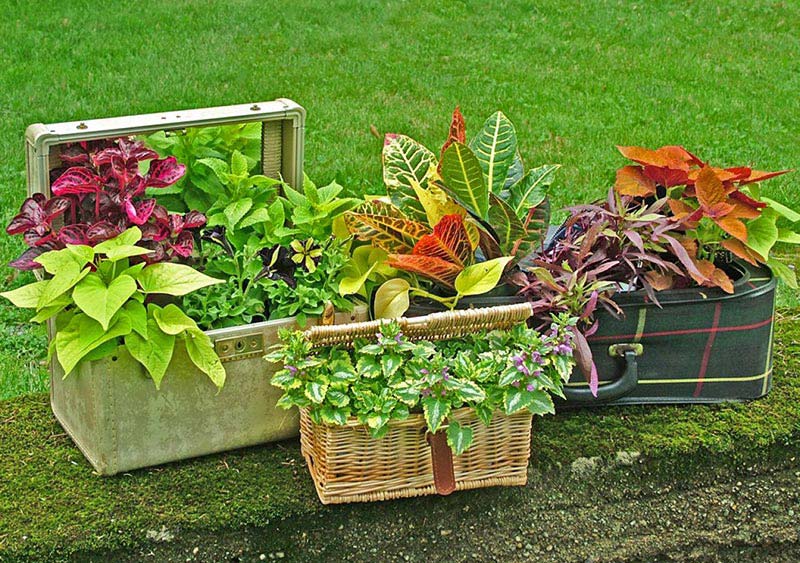
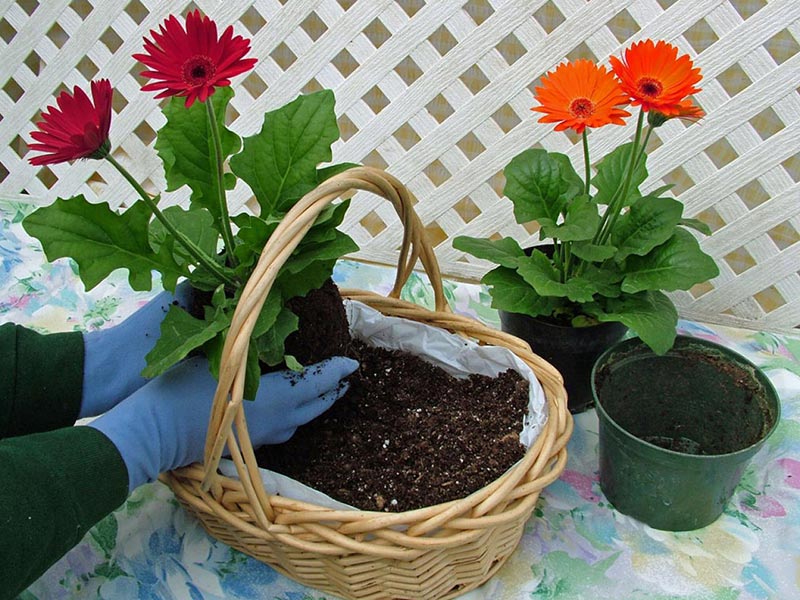
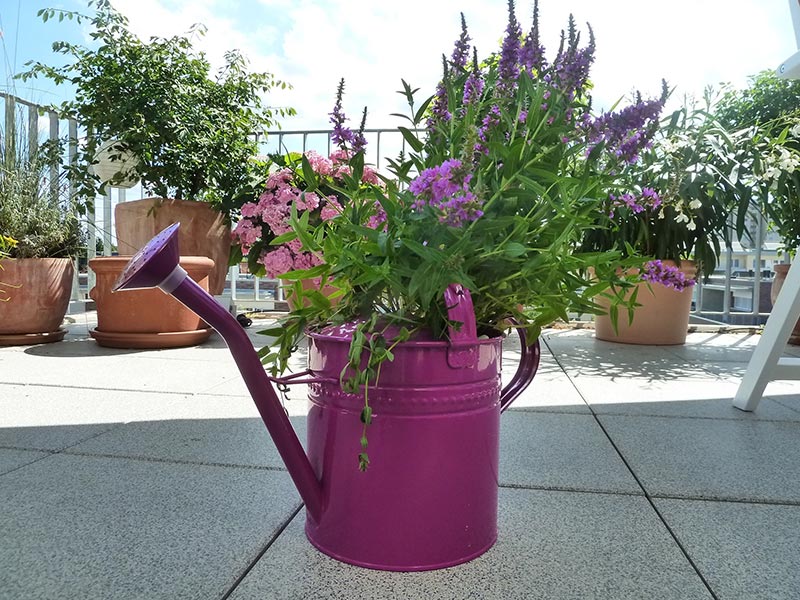
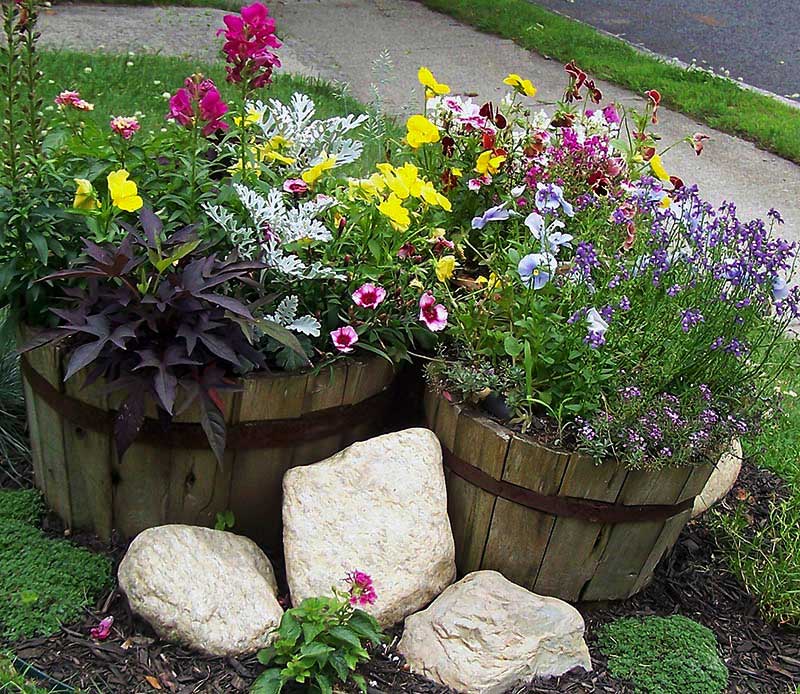

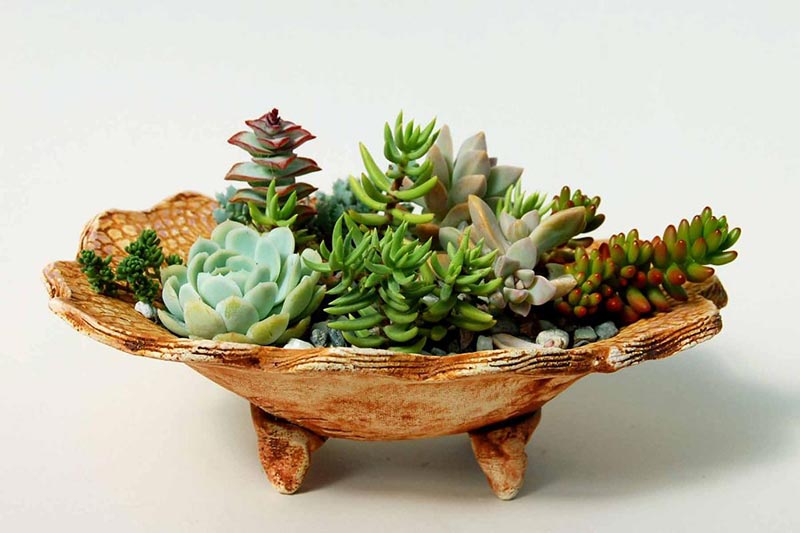
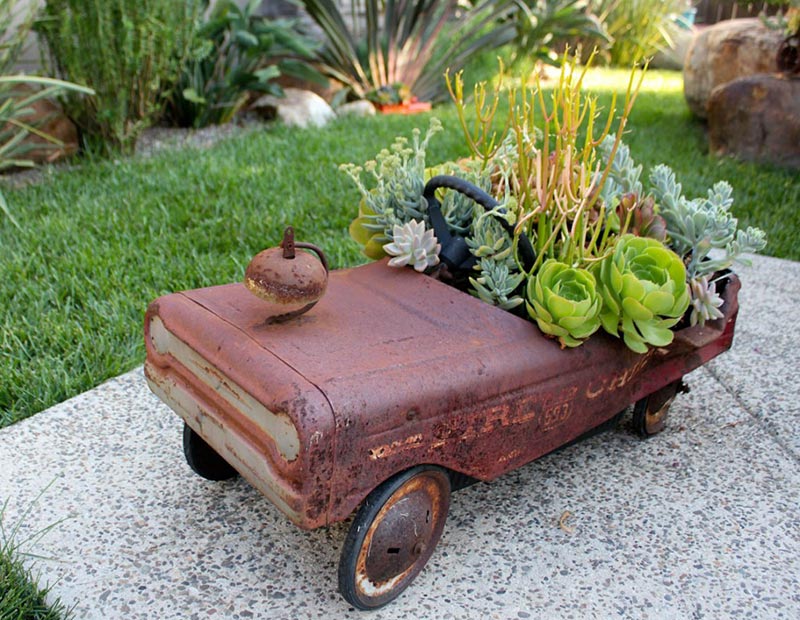
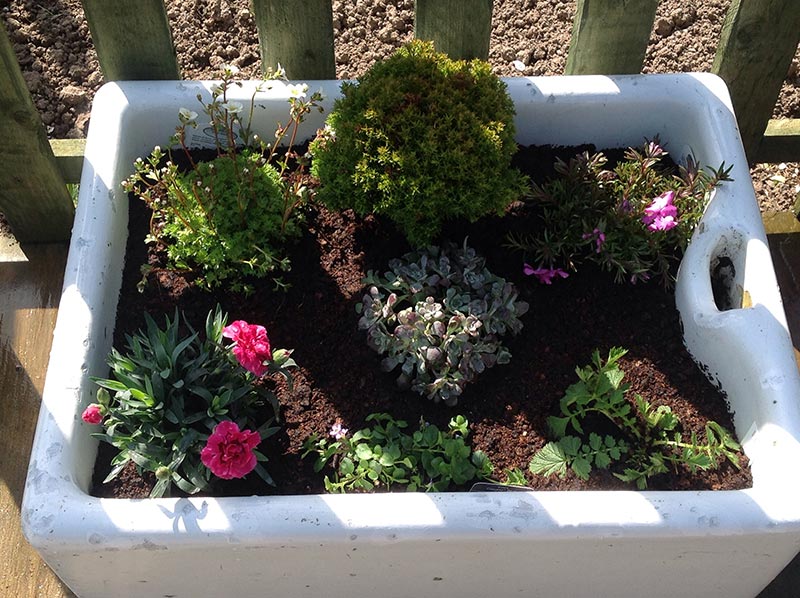
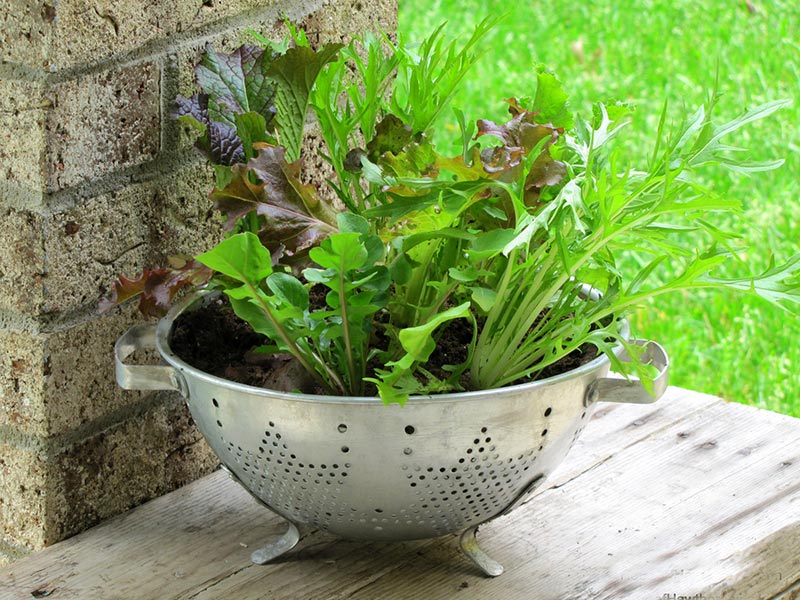

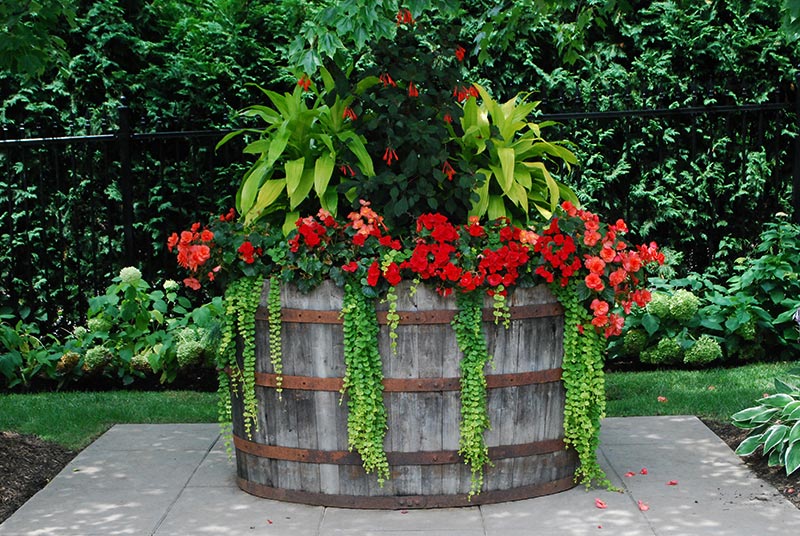
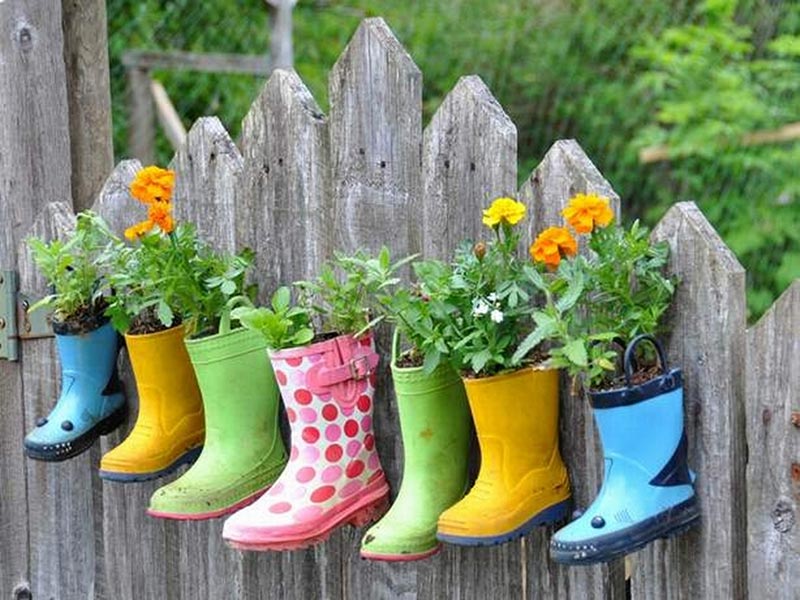
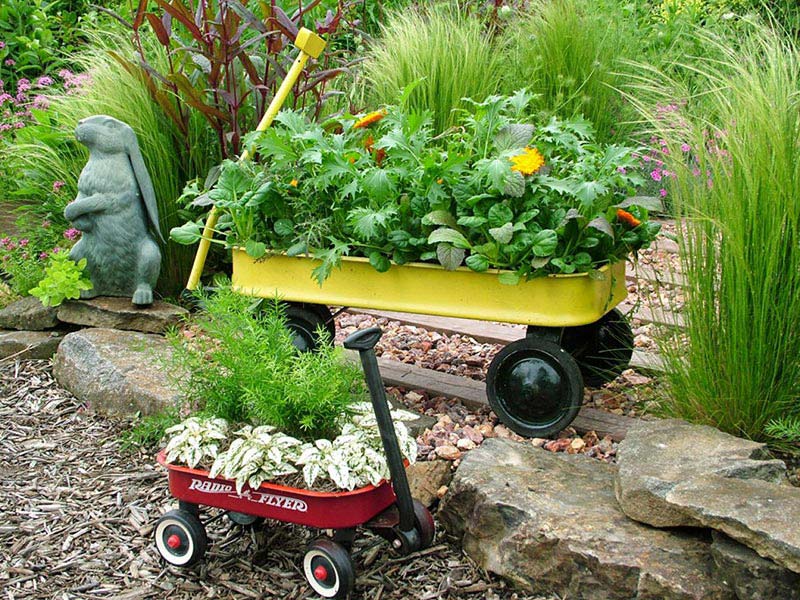
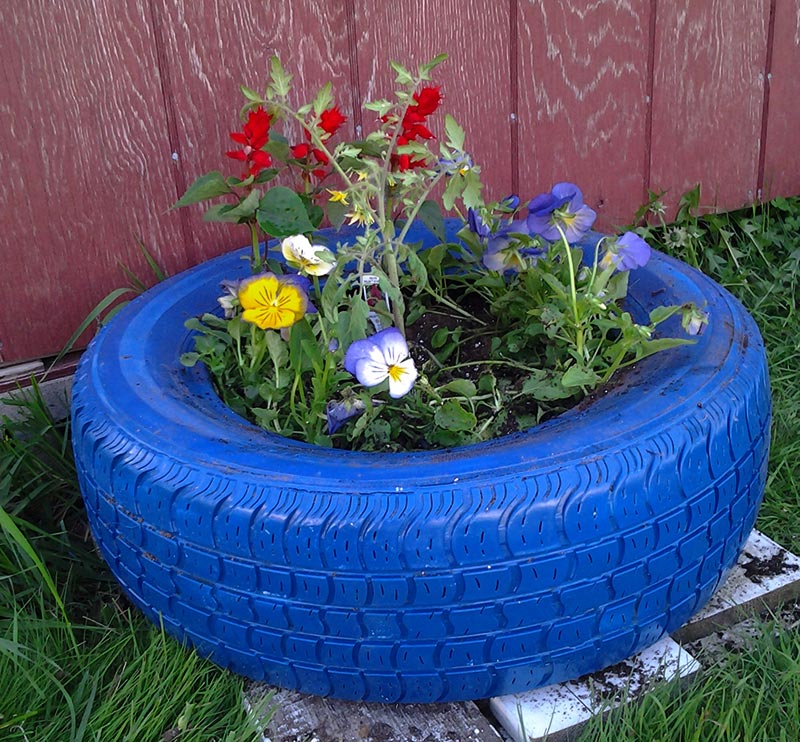
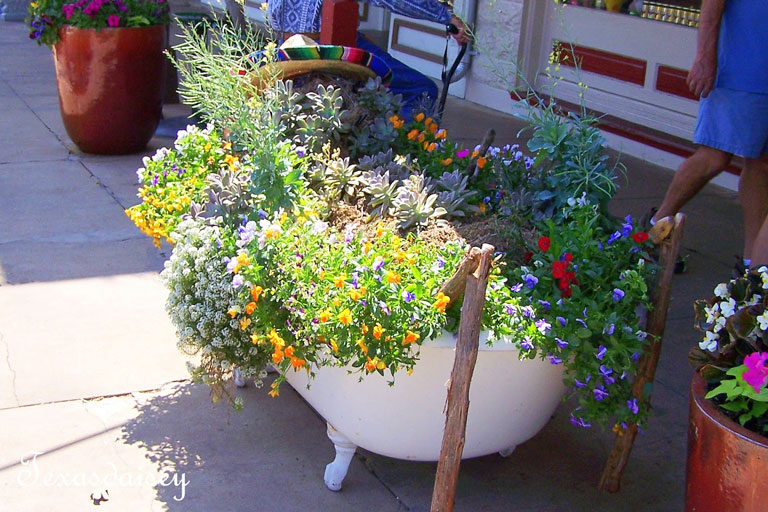

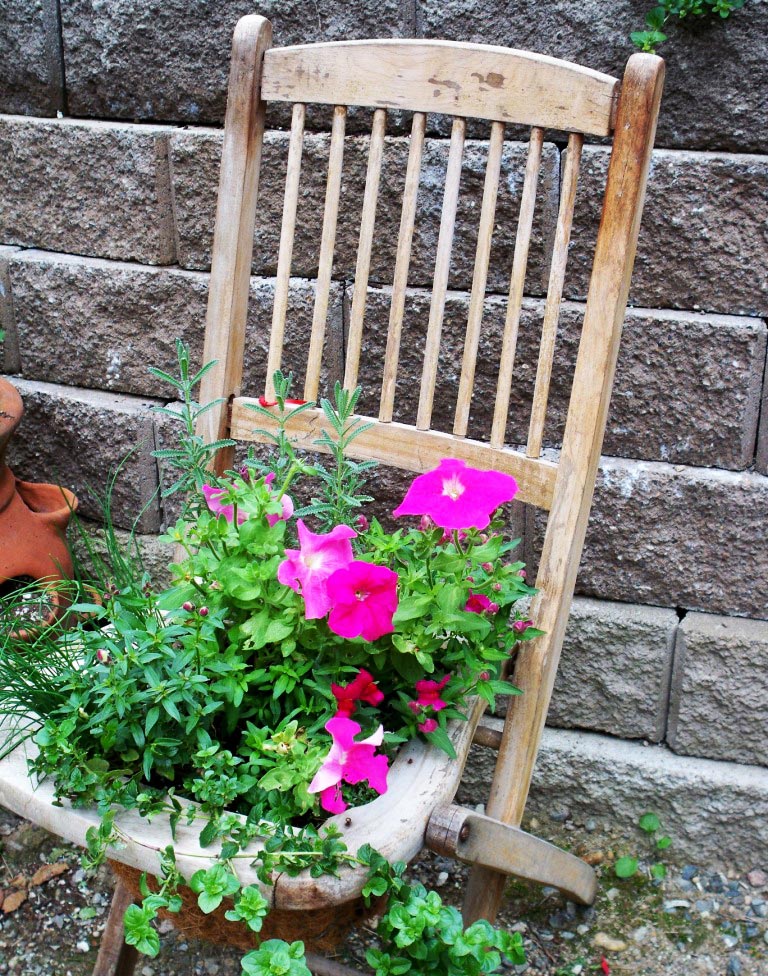
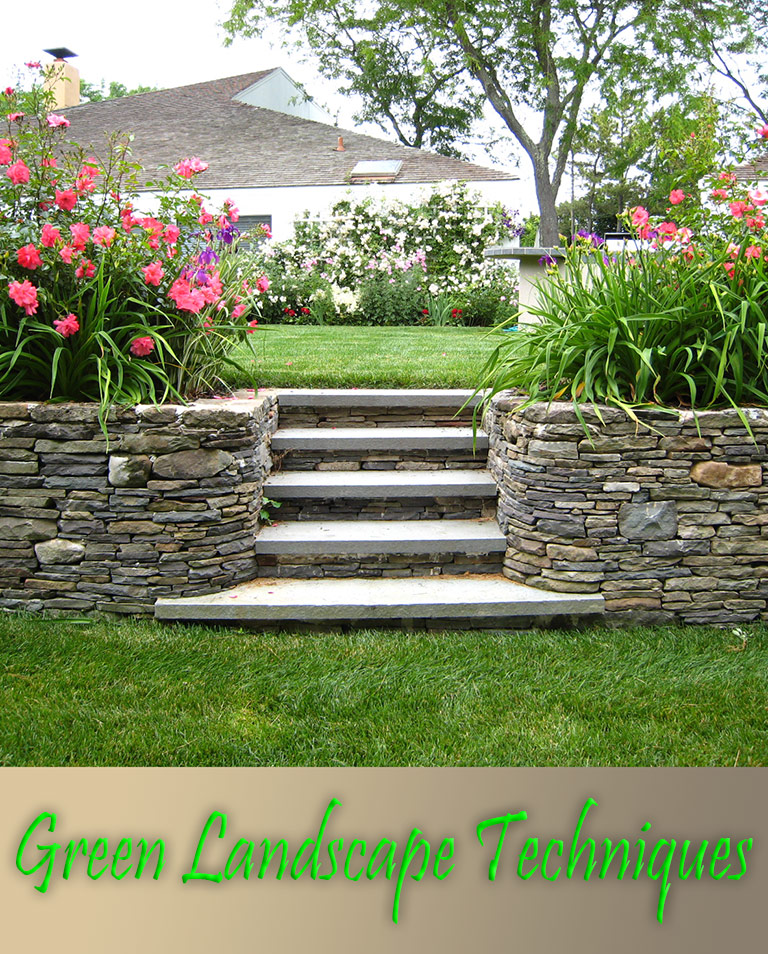
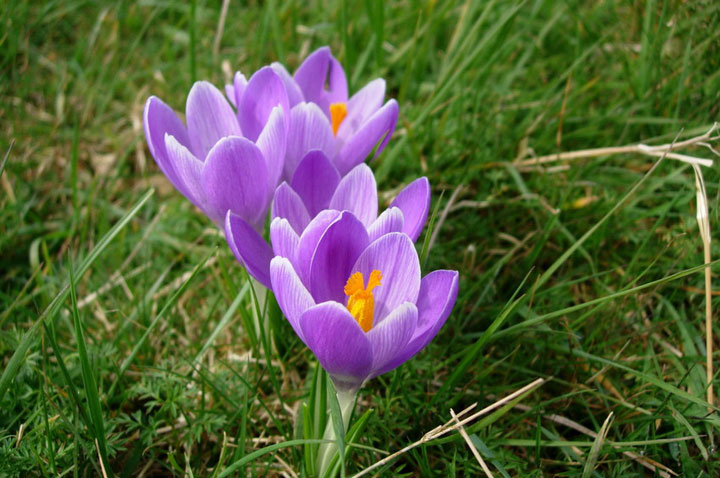
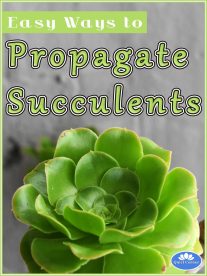
Leave a Reply